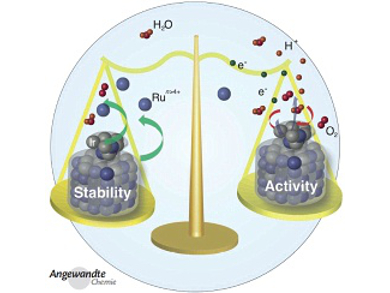In this issue, S. J. Reinholt and A. J. Baeumner review the microfluidic isolation of nucleic acids. What advantages and disadvantages do the various techniques have? J. T. S. Hopper and C. V. Robinson discuss how mass spectroscopy helps to quantify protein interactions in another Review. What are the potential pitfalls in data interpretation? The Highlights by C. Bräuchle et al. and J. S. Speck et al. deal with the research that earned this year’s Laureates the Nobel Prizes in Chemistry (super-resolved fluorescence microscopy, to E. Betzig, S. Hell, and W. E. Moerner) and Physics (blue LEDs, to I. Akasaki, H. Amano, and S. Nakamura), which were presented this week. In his Essay, D. R. Herschbach, who shared the 1986 Nobel Prize in Chemistry, looks back on the life of the 1914 Chemistry Nobel Laureate Theodore William Richards and his exact determinations of the atomic masses of a large number of elements.
In the Communications section, N. M. Markovic et al. explain how to use surface segregation to design stable Ru–Ir oxides for the oxygen evolution reaction (see picture). I. W. Davies et al. present cyclic-disulfide-based prodrugs for cytosol-specific drug delivery. Y. C. Huang and D. Sen developed a twisting electronic nanoswitch made of DNA, and W. Xu and N. Yoshikai reversed the intrinsic regioselectivity of the cobalt-catalyzed addition of imines to styrenes by ligand elaboration.
- Angewandte Chemie 51/2014: Nobel Week,
Angew. Chem. Int. Ed. 2014, 53 (51).


